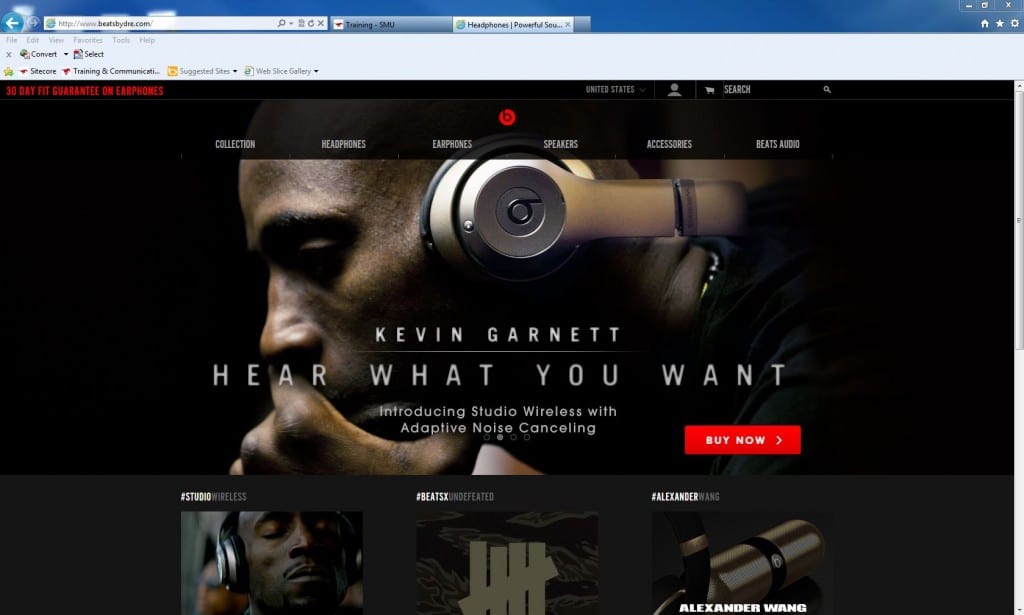How secure is Inside.SMU and who uses it? This webinar will show you how to utilize Inside.SMU’s permissions features for specific audiences. We will explore the differences between Site permissions, and setting up permissions at the Library and List level as opposed to individual items. We’ll also show you how to grant and test permissions to make sure they are applied correctly.
Category: Security Awareness
SMU’s Password Reset Tool
This mini-webinar by IT Help Desk Consultant Zach Peterson show you how to enroll and use SMU’s password reset tool.
Free & Easy Cloud Backup Solutions
As each semester comes to a close, I like to take stock of all of the documents I’ve written over the last few months and make sure they are backed up. There are plenty of options available to backup and sync your data between multiple computers and mobile devices.
You’ve probably seen the commercials on TV or on the radio for paid cloud backup services like Carbonite and BackBlaze. Those services are all well and good, but sometimes the monthly fees can add up, and you may not always need all of the bells and whistles they provide.
Luckily, there are quite a few free solutions that you can use to back up your data as well as have it available from anywhere! Here’s a rundown of some of the most popular choices.
Dropbox
Dropbox is probably the most popular choice out there. The starting package is completely free and gives you 2GB of space. Since the amount of starting space is so small, Dropbox would be best for those essential smaller documents and files that you use frequently or need access to at multiple devices.
Box
Box is quite similar to Dropbox, but with more options once you get into the pay levels of service. The free version includes more space than the free version of Dropbox, but expect to be persuaded into purchasing a plan.
OneDrive
 OneDrive is Microsoft’s first big foray into the cloud storage game. If you have a Hotmail, Outlook.com or another type of Microsoft account, you may already have it! You get 7GB as the default for free plans, but you can earn extra space by backing up your cell phone photos, purchasing Office 365 (which is soon to be free for SMU students) or referring friends.
OneDrive is Microsoft’s first big foray into the cloud storage game. If you have a Hotmail, Outlook.com or another type of Microsoft account, you may already have it! You get 7GB as the default for free plans, but you can earn extra space by backing up your cell phone photos, purchasing Office 365 (which is soon to be free for SMU students) or referring friends.
Google Drive
 If you’re more of a Gmail kind of person, Google has you covered, too! Google provides 15GB for free to those holding Google accounts, and more is available for a charge. Of course, Google Drive storage seamlessly works with Google Apps, too.
If you’re more of a Gmail kind of person, Google has you covered, too! Google provides 15GB for free to those holding Google accounts, and more is available for a charge. Of course, Google Drive storage seamlessly works with Google Apps, too.
(Faculty & Staff) CrashPlan Pro
 The University uses CrashPlan Pro for all primary computers. It makes a complete back up of your profile and file folder structure. The above options are great for personal storage, but make sure you’ve installed CrashPlan Pro on your University machine. It could save you a big headache if your machine ever crashed! For full details, visit http://www.smu.edu/BusinessFinance/OIT/Services/Backup.
The University uses CrashPlan Pro for all primary computers. It makes a complete back up of your profile and file folder structure. The above options are great for personal storage, but make sure you’ve installed CrashPlan Pro on your University machine. It could save you a big headache if your machine ever crashed! For full details, visit http://www.smu.edu/BusinessFinance/OIT/Services/Backup.
What’s Your Crash Plan?
Did you know that SMU has a backup service for University owned, primary computers?
CrashPlan Pro is a software application that Faculty and Staff can install on Windows, Macintosh and Linux platforms via LanDesk. After installation, it performs a complete backup of your profile or home directory (file folder structure). If you store your files in the default locations (My Documents, Desktop etc.), those will be included.

Once the initial backup is complete, the application will backup any changes every three hours. Although the process runs continuously in the background, it utilizes very few resources. This process is fully automated and requires no user intervention! When you need to recover data, there’s a quick and easy process to locate the folders or files you need from the backup client.
It’s secure too! The backup is completely encrypted. That means your data is protected by an algorithm that only your SMU ID and password can unlock.
For more information about eligibility, obtaining the software, restoring data, and more, please visit our service page http://www.smu.edu/BusinessFinance/OIT/Services/Backup.
Identify Online Shopping Scams
By Rajat Shetty During the holiday season, Cybercriminals’ potential victims are often caught up in the frenzy of shopping, finding the best deals, and acting quickly to take advantage of limited offers. Email and social networks are clogged with sales and offers, both legitimate and fraudulent. Sometimes haste causes shoppers to miss the warning signs of a fraudulent website.
Avoid Suspicious Websites
Make sure you cross check the contact info before submitting your payment details. In many cases, fake websites put up incorrect contact info like a wrong phone number or an incorrect address. A few other warning signs of suspicious websites are lots of broken links, grammatical mistakes, and spelling errors. If in doubt, don’t check out!
Verify the Web Address (or URL)
Before you type in any credit-card numbers at check out, check the Web address, or uniform resource locator (URL), of the payment page and make sure it’s using a secure connection. You should be seeing either the character string “https://” before the website URL, or a small icon of a green padlock. Also, make sure the URL address is correct, and not a slight misspelling of the real address or a random URL.
For example, check the snapshots below for the official website of Beats headphones. The first one is the original website, whereas the second website is a fraudulent one having the exact layout and font style as the original website. The difference is, when you pay through credit card or debit card on the 2nd website you are not going to receive any headphones (Not even a fake one!)
Use Caution when Shopping by Phone
Although it can be convenient, use extra care when shopping with your smartphone. Phones are more susceptible to malwares as most do not have an anti-virus. Also, it’s highly unsafe to store your credit card or debit card information on your phone. Only buy from trusted and familiar websites when you shop through your smartphone, and use a password protected internet connection. Never shop over unsecured public Wi-fi. Remember, it’s always better to check twice before clicking the ok button. People loose thousands of dollars in a haste to snag online deals. Protect yourself from becoming a victim to fraudulent websites by exercising caution before giving out your credit/debit card details.



